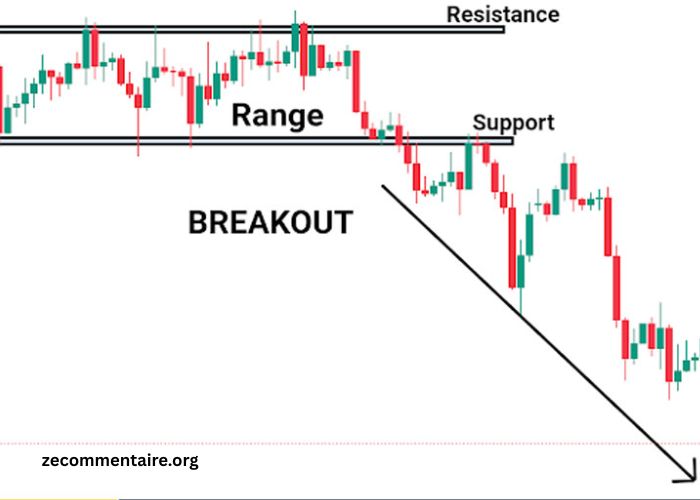Breakout trading is a widely adopted technique in the stock market, favored by both novice and seasoned traders aiming to capitalize on sharp price movements.
A breakout occurs when a stock’s price surpasses a key resistance or falls below a major support level, often signaling the start of a new trend. However, not all breakouts are reliable; many turn out to be false signals.
To trade them effectively, you need to combine technical insight with disciplined execution. In this article, we’ll walk you through the essentials of successful breakout trading.
How to Trade Breakouts Effectively?
Breakout trading is a strategic approach in the stock market that seeks to capture meaningful price movements when a stock surpasses a well-defined support or resistance level. Below are key steps to approach breakout trading effectively:
1. Identify Key Levels
To trade breakouts effectively, start by identifying strong support and resistance levels using historical price data. These levels represent areas where price has consistently reversed or stalled, indicating potential zones of interest for market participants.
Look for chart patterns like triangles, rectangles, or channels, which help define these zones more clearly. Use tools like moving averages, volume profile, and trendlines to reinforce your analysis.
Avoid reacting to minor fluctuations—focus on well-tested levels confirmed by multiple price touches, as these tend to offer higher breakout reliability and reduced risk of false signals.
2. Wait for Confirmation
Wait for confirmation before entering a breakout trade to avoid false signals. A breakout is only reliable when the price closes beyond a key support or resistance level, ideally with increased trading volume. This volume surge indicates genuine market interest and reduces the risk of reversal. Traders often miss this crucial step, leading to losses.
Many stock market courses online emphasize this principle, teaching students to prioritize confirmation to ensure better trade entries and consistent performance in dynamic market conditions.
3. Set Entry Points
Enter the trade after confirmation of the breakout. Avoid impulsive entries; wait until the price closes firmly beyond the resistance or support zone.
Ideally, this should be supported by a noticeable rise in volume. Conservative traders may prefer to enter on a retest of the breakout level, using it as a new support or resistance. This approach helps minimize the risk of false breakouts.
Always align entry decisions with your trading plan and risk parameters to maintain discipline and consistency in execution.
4. Apply Stop-loss Orders
To manage risk during breakout trades, it’s essential to set stop-loss orders just beyond the breakout level, below for long positions and above for short ones. This protects capital if the breakout fails and the price reverses.
Proper stop-loss placement is a hallmark of disciplined trading. Without such protective measures, a false breakout can lead to significant losses and undermine long-term profitability in volatile markets.
5. Determine Profit Targets
To determine profit targets in breakout trading, measure the height of the price pattern preceding the breakout, such as a rectangle, triangle, or flag.
Add (for bullish breakouts) or subtract (for bearish breakouts) this value from the breakout point to estimate the potential price move. This projection offers a rational, data-driven target aligned with prior volatility.
Professional traders often refine this with support-resistance zones and market sentiment, ensuring targets remain both achievable and grounded in historical price action rather than arbitrary estimates.
Conclusion
Trading breakouts involve identifying when a stock’s price moves beyond established support or resistance levels, signaling potential for significant price movement. By recognizing these patterns and confirming them with increased trading volume, traders can capitalize on emerging trends.
However, it’s essential to manage risks effectively, as not all breakouts lead to sustained trends. To learn more, you can enrol in Upsurge.club’s technical trading courses.





